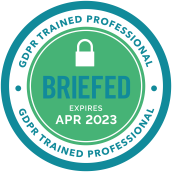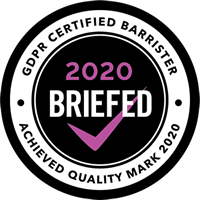
JSC MEZHDUNARODNIY PROMYSHLENNIY BANK v PUGACHEV & ORS [2017] EWHC 2426 (CH)
12th October 2017
An important ‘trust busting’ decision in which a settlor of five discretionary trusts was held to be the true owner of the trust assets.
In a decision handed down yesterday, Birss J held that Mr Pugachev, who was also a discretionary beneficiary and the protector of the five trusts, was the sole beneficial owner of the trust assets. He did so on two bases:
1. That on a proper construction of the trust deeds, the wide powers conferred on the protector were purely personal powers which the protector could exercise in his own selfish interests. Mr Pugachev’s powers were such that he retained ultimate ownership and control of the assets.
2. Alternatively, if on an objective interpretation of the trust deeds the protector’s powers were fiduciary such that Mr Pugachev did not have unfettered control and ownership of the assets, then the trust deeds were shams because it was the parties’ subjective intention that Mr Pugachev retain the sole beneficial interest in the assets.
Background
Between 2011 and 2013 Mr Pugachev purported to settle around US$95 million worth of assets on five discretionary trusts. They included a luxury holiday home on St Barths, valued at c. US$40 million. Each of the trust deeds named Mr Pugachev as a discretionary beneficiary and protector. In 2015 the Claimants obtained a substantial judgment against Mr Pugachev and in 2016 they brought proceedings in England to enforce the judgment against the assets in the trusts.
The Claimants claimed to be able to enforce against the assets in the trusts on three bases:
1. First, a combination of Mr Pugachev’s position as settlor and discretionary beneficiary, together with his extensive powers as protector, meant that the true effect of the deeds of trust was to create bare trusts for Mr Pugachev. The Claimants referred to this as the ‘illusory trust’ claim, although Birss J described it as the ‘True Effect of the Trusts’ claim.
2. Second, the deeds of trust were shams and that the true intention was to create bare trusts for Mr Pugachev.
3. Third, the trusts should be set aside under section 423 of the Insolvency Act 1986.
The ‘True Effect of the Trusts’ claim
Mr Pugachev had extensive powers as protector of the trusts. He could refuse to consent to the trustees’ exercise of their powers and thereby stultify the trust. He could dismiss the trustees “with or without cause”. Having removed the trustees, he could exercise a power of attorney to ensure the transfer of the trust property to newly appointed trustees.
Birss J held that these powers were purely personal powers in the sense that they could be exercised by Mr Pugachev in his own selfish interests and without regard to the interests of the other beneficiaries. The judge relied in particular on the fact that Mr Pugachev was the settlor, discretionary beneficiary and protector of the trusts (para [268]). He further held that the effect of Mr Pugachev being able to exercise his powers in his own interests was to “allow him to retain complete control over the assets he settled into the trusts”. Mr Pugachev could prevent the trust property being distributed to any of the other named beneficiaries and he could ensure that the assets would be distributed to him by removing trustees who refused to transfer the assets to him and appointing trustees who would (paras [244]-[245]).
The Judge concluded that “on their own terms these trusts do not divest Mr Pugachev of the beneficial interest he had of the assets transferred into them. In substance the deeds allow Mr Pugachev to retain his beneficial ownership of the assets” (para [278]).
The Sham Claim
As Birss J noted, there was little dispute on the law relating to sham trusts (paras [145]-[154]). A deed of trust is a sham or pretence if it is intended to mislead third parties and the court as to the true basis of which the assets are held. If assets are transferred to a trustee then the deed of trust is only a sham if the parties subjectively share a common “shamming” intention. In this case, the trustees were each specially incorporated New Zealand companies so the intentions attributable to the companies were those of the natural persons who managed and control the relevant actions of the companies.
On the facts, Birss J held that Mr Pugachev intended at all times to retain ultimate control of the assets and he intended to use the trusts to hide his ownership of the assets. His method of exercising control was through his position as protector. He further held that the New Zealand solicitor who acted as a director of each of the trustee companies had no intentions independent of those of Mr Pugachev. He simply went along with what Mr Pugachev wanted (paras [434]-[435]).
As Birss J recognised, the case on sham dove-tailed with the case on ‘illusory trust’. The case on sham depended on whether the trustees and Mr Pugachev subjectively intended Mr Pugachev to have complete control and ownership of the trusts’ assets. The trust deeds indisputably provided for Mr Pugachev to have some control in his capacity as protector. If Mr Pugachev’s powers were fettered in some way then the question was: did the parties subjectively intend Mr Pugachev’s powers to be fettered, or was he intended to be the sole owner and unfettered controller of the assets? (see paras [304]-[307]). Birss J concluded that:
“if a proper approach to the construction of these deeds was to lead to a conclusion that the Protector’s relevant powers are fiduciary, as Mr Patterson [the New Zealand solicitor] now says they are, and that in turn was to lead to a conclusion that under the deeds Mr Pugachev is not a beneficial owner, then those deeds are a sham. The settlor intended to use them to create a false impression as to his true intentions and the trustees went along with that intention recklessly.”(para [437])
The judge recognised that this a sophisticated and subtle form of sham. Mr Pugachev’s role in relation to the assets was not completely disguised, but he could say to third parties (as he did to the Claimants in this case) “I am only a discretionary beneficiary and I have limited powers as protector”. On the other hand, the true intention was that Mr Pugachev had ultimate ownership and control of the assets.
Section 423 claim
In light of his decision on the other heads of claim, Birss J reached the unsurprising conclusion that if the trust deeds did operate to divest Mr Pugachev of his beneficial interests in the assets, then their purpose was to hide his control of the assets from his creditors. The judge was not required to consider the question of the appropriate remedy under section 425.
Comment
Creditors looking to attack trusts have traditionally alleged that the trusts are shams or should be set aside under anti-avoidance legislation. But an allegation of sham is often hard to prove and some debtor-friendly jurisdictions (particularly in the Caribbean) have limited or no anti-avoidance legislation. This decision gives creditors a new angle of attack in cases where the debtor has retained powers under the trust instrument.
Stephen Smith QC and Christopher Lloyd were instructed by Hogan Lovells partners Michael Roberts and Rebecca Wales. Previous decisions in the litigation include Mezhprom v Pugachev [2015] WTLR 1759 (CA) (freezing injunctions against trustees of purported discretionary trusts) and Mezhprom v Pugachev [2016] 1 WLR 160 (CA) (disclosure of information about discretionary trusts).



